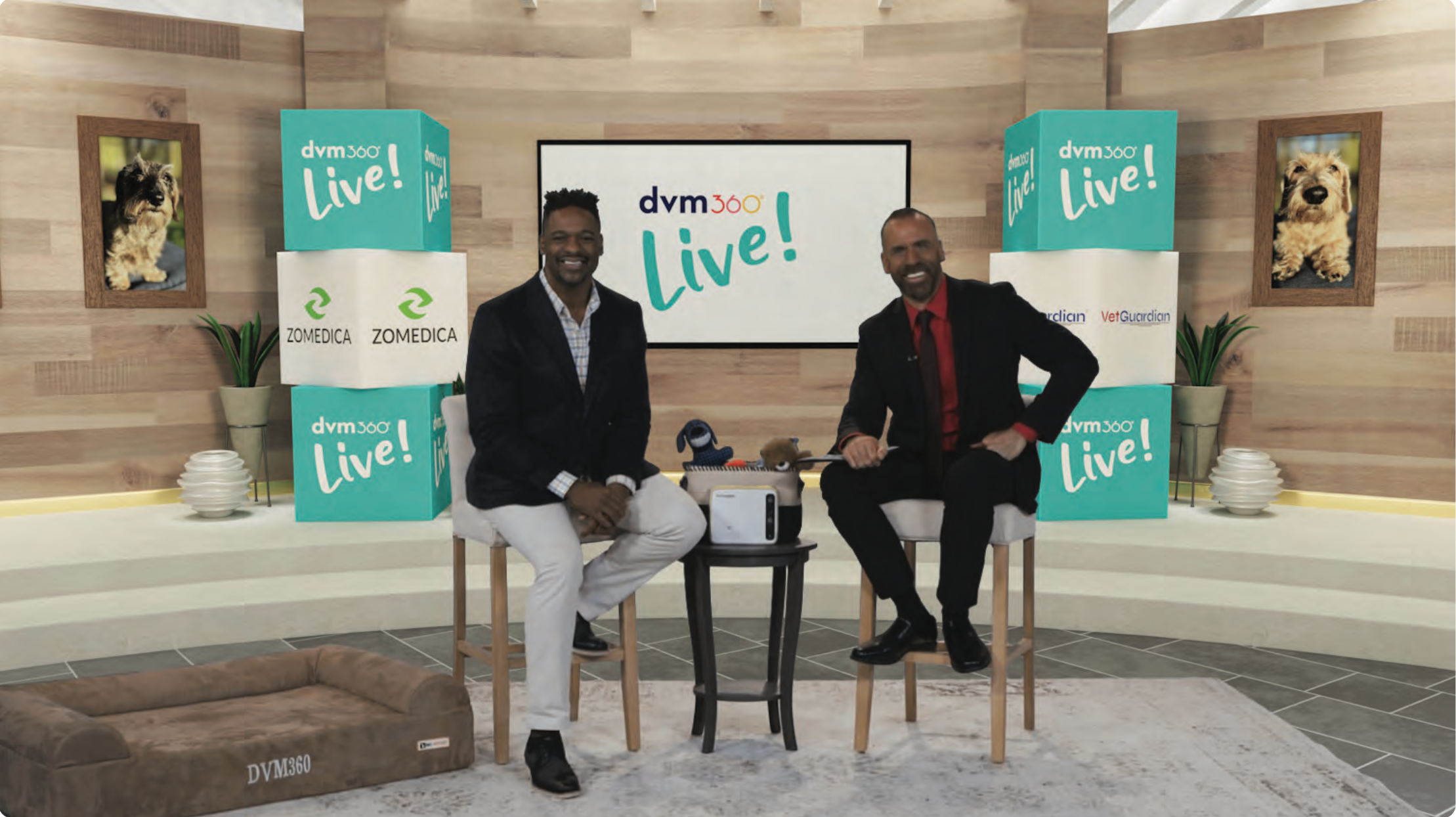Stress reduction in animals
Improving patient recovery with remote vital monitoring
This content is sponsored by Zomedica.
One aspect of taking care of a pet is managing their emotions and reactions when they are stressed. Certain situations, like surgery, can heighten stress and lead to a variety of adverse effects. When a pet is trying to heal, it is important to reduce as many stressors as possible. Adam Christman, DVM, MBA, of dvm360 Live, spoke with Courtney Campbell, DVM, DACVS-SA, about how remote monitoring technologies are changing the recovery process for pets. They also discussed how these technologies improve time management for veterinary staff.
Courtney Campbell, DVM, DACVS-SA (left) and Adam Christman, DVM, MBA (right).

Adam Christman, DVM, MBA: Why is it so important to reduce stress for animals?
Courtney Campbell, DVM, DACVS-SA: There are so many reasons why we want to reduce stress in patients recovering from surgery, but a big reason is pain. When pets are stressed, their pain sensations are heightened due to the release of stress hormones. Chronic stress can reduce endorphins, healing, and immune system responses. Postoperative recovery for pets is not a singular moment in time, but a journey. We want to help them every step of that journey.
Christman: As an orthopedic surgeon, are there moments postoperatively where you worry about taking pets’ vitals?
Campbell: Sometimes when you walk out of the operating room, someone on your animal care team will ask, “How did it go?” My response is always, “We’ll see.” When the patient leaves the operating room, the journey isn’t over. Recovery is the next part. For example, we want a dog to be able to sleep off anesthesia without being woken up repeatedly to check vitals. However, that needs to be done safely. One of the ways to accomplish this is through remote monitoring. It is an aspirational moment to always have eyes on a pet without requiring staff to check every 5 minutes or only getting snapshots of a dog’s vitals with each physical check-in. I have always imagined taking postoperative care in video form with continuous monitoring.
Christman: What does the VetGuardian do?
Campbell: Similar to a radar gun while driving, the VetGuardian uses radio waves and other remote sensing mechanisms to monitor the patient and can track temperature, pulse, and respiration. It also has an alarm that alerts veterinarians or veterinary technicians if those vitals are outside of a preset or customizable range. The camera on the device— which contains thermal imaging—allows for ‘eyes’ to always be on the patient and the ability to read heat maps. These capabilities put time back into the hands of the veterinary team.
This device keeps a record of every vital that is read. It removes the need to write down data and then enter them into a system later. Whether a pet had challenges during their recovery or not, a veterinarian is able to see accurate data for every minute of the recovery.
Christman: Walk me through some of the differences between veterinary practices that have the VetGuardian and those who don’t.
Campbell: One of the principal reasons why primary care practitioners may refer patients to a specialty practice is because they realize that practice may have technology available that they do not. This technology can be anything from a CT or MRI to a VetGuardian. Reaching out to other practices builds a sense of community between veterinarians.
Technology is worth the investment as a care provider. No matter the species, surgery can be a scary time. There is anxiety before, during, and after surgery. When pets come out of an operation, you want them to have a good experience. At every single stage, you want to put in that investment and make sure they have a comfortable recovery.

